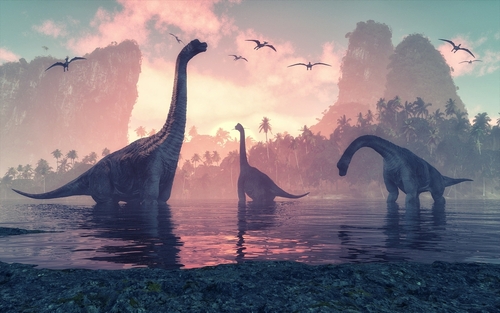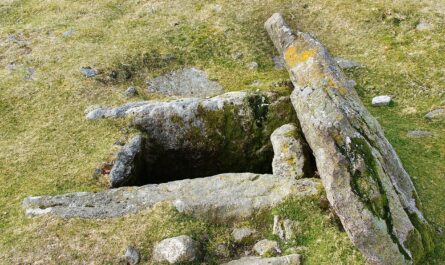180 million years ago, as the Supercontinent Pangea began to fracture to give rise to the world as we know it today, dinosaurs appeared capable of regulating their own temperature, without needing the Sun.
Around 55 million years before the appearance of the first mammals and well before that of the first birds, certain species of dinosaurs were able to evolve and become endotherms.
Endothermic dinosaur or ectothermic dinosaur: what is the difference?
An endotherm is any species capable of regulating its own temperature without the need for external means. Thus, birds, terrestrial and marine mammals as well as humans are endotherm or more commonly called “warm-blooded” species.
Conversely, an ectothermic or poikilothermic species needs to regulate its temperature thanks to its environment and external conditions (being in the sun or in the shade, etc.). Thus, in this category, we include reptiles, amphibians as well as the vast majority of fish. We will then more often speak of “cold-blooded” species.
And if the dinosaurs, whose Latin name means “terrible lizard”, were mainly considered to be cold-blooded animals, therefore ectothermic, some of their representatives, the predators in particular, were definitely warm-blooded as a study demonstrated published on Nature in May 2022.
But now that we know that some dinosaurs were endotherms, it remains to be seen when the first representatives of the genus appeared.
The first warm-blooded dinosaurs appeared at the beginning of the Jurassic
The Jurassic, apart from the fact that it gave its name to one of the best-known cinema franchises, is above all a geological period which falls within the Mesozoic era.
It extended from – 201.4 million years ago to – 145 million years ago and saw the proliferation of dinosaurs such as Diplodocus, Allosaurus, Stegosaurus, Megalosaurus or even Archeopteryx and many others .
The study published by the University College of London therefore deals with the Jurassic and more particularly the Lower Jurassic (-201 to -174 million years ago). Indeed, it was during this period which marks the beginning of the golden age of dinosaurs that warm-blooded or endotherm species would have emerged.
It was by studying the movement of dinosaurs that the joint teams from the University of London and that of Vigo were able to formulate this hypothesis.
Indeed, during the Lower Jurassic, some species of two of the three major groups of dinosaurs, the theropods and the ornitischians, moved to colder climates, in which cold-blooded animals could not have adapted. So, “they may have developed endothermy at that time”.
As for the representatives of the third group, the sauropods, they remained in warm climates because they were definitely cold-blooded.
Researchers also see this action of non-movement as a reason why they were able to reach gigantic sizes compared to those who had moved.
Why did some dinosaurs move to colder climates?
The answer lies in a problem we are facing today: global warming.
Indeed, around 183 million years ago what is known as the Jenkyns event took place. The latter resulted, as specified in a study on the impact of this event on dinosaurs, by “global warming, a disruption of the carbon cycle, and a worsening of certain weather phenomena as well as numerous forest fires”.
Thus, this global warming which took place in the middle of the Lower Jurassic led to the extinction of a large part of the plants, which forced the animals present to find other places to feed. Colder places therefore, which led to their evolution as endotherm species.
Source: IFLScience / UCL



